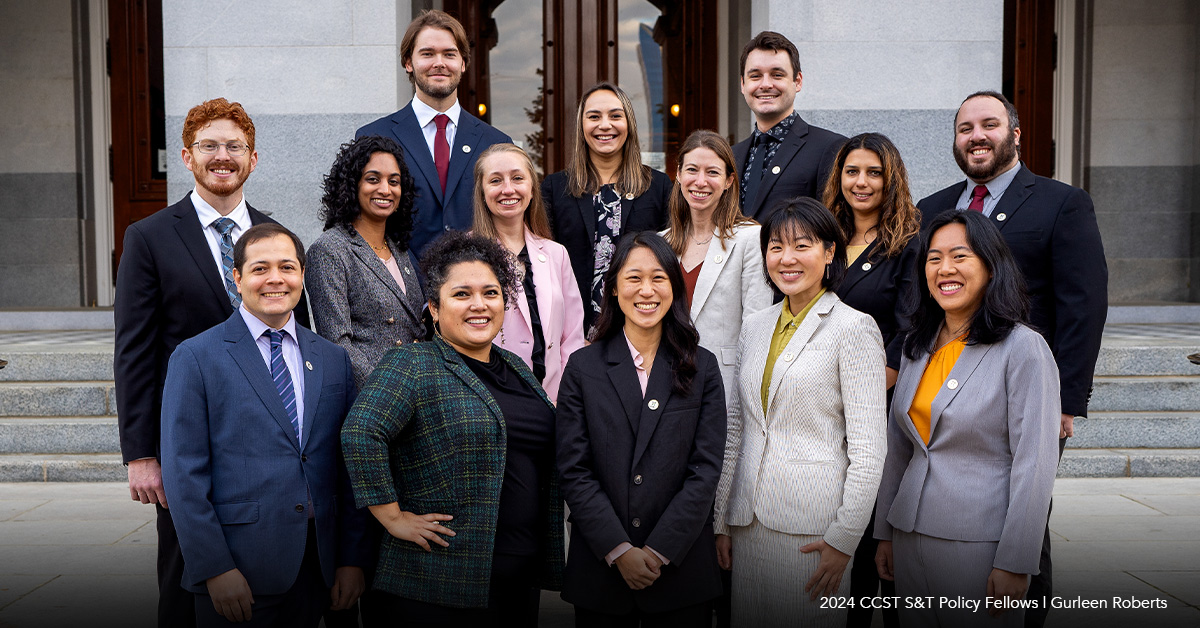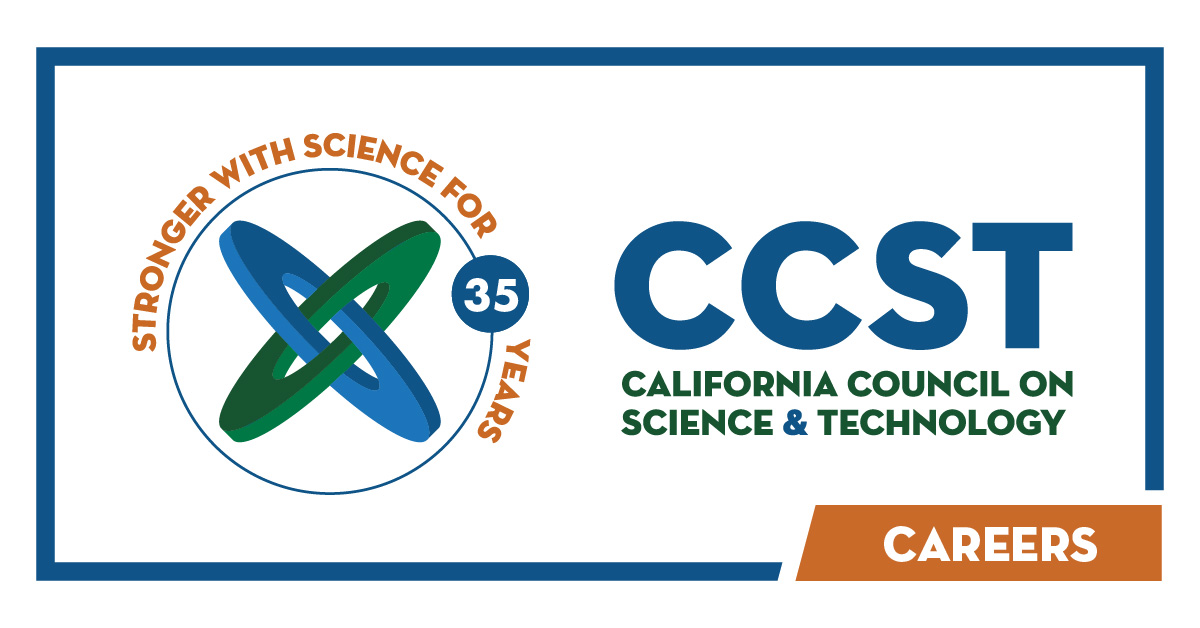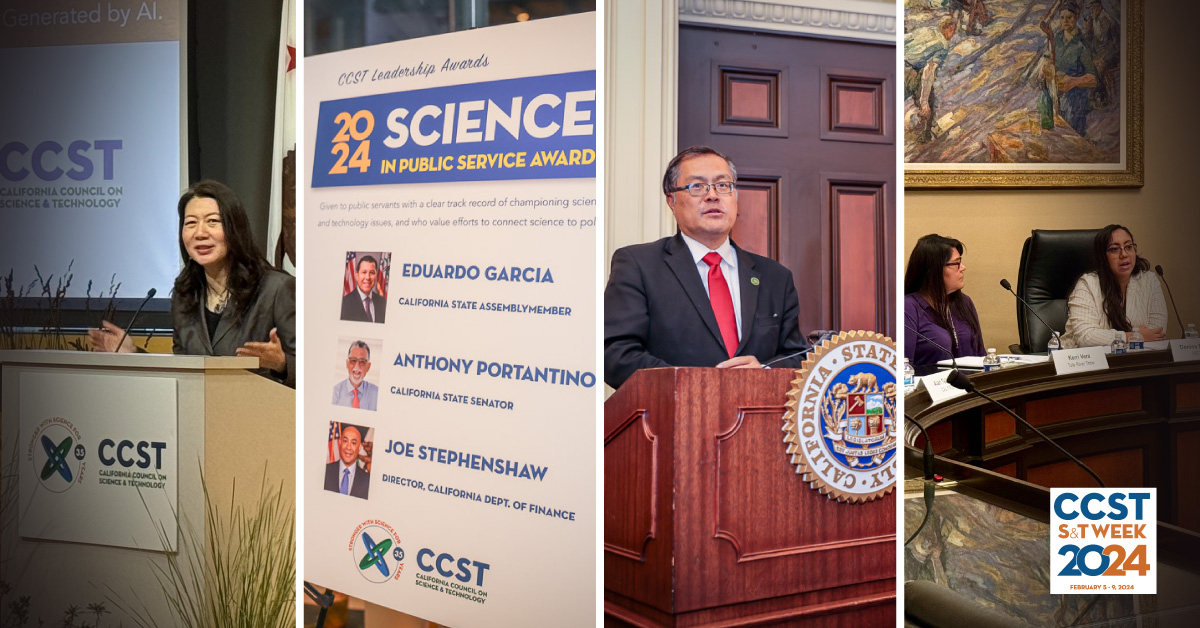Life Before #CAleg: 2017 CCST Science Fellows Share Their PhD Pasts (Part 3)
January 5, 2018 | CCST S&T Policy Fellows
The 2017 Class of our CCST Science & Technology Policy Fellows have completed their fellowship year! As they continue their professional path in or beyond Sacramento, we take a look back at their life before the Legislature, and the journeys that shaped them into talented thinkers and amazing human beings. See what experiences and insights our CCST Science Fellows have brought to the policymaking arena of California, and to careers beyond! [Read Part 1 | Part 2 | Part 3]

Mikel Shybut, PhD
Placement: Senate Transportation and Housing Committee
PhD, Plant Biology, UC Berkeley
BA, Biological Chemistry, Grinnell College
BA, Russian, Grinnell College
Perhaps you’re tempted by tapioca pudding. Or preferential toward pearl milk tea. Or maybe you’ve tasted the tuberous root used to make both these sweet treats: the cassava.
For much of the tropical world, the cassava root is one of the top sources of food carbohydrates — more than 288 million metric tons of this drought-tolerant plant was produced in 2016, according to a United Nations estimate.
For Mikel Shybut, however, the cassava plant offered an opportunity to solve big-scale challenges with small-scale solutions.
“I studied the phenomenon of ‘cassava bacterial blight’, the major bacterial disease of cassava,” says Mikel, who hails from Nebraska. The pathogen responsible for the blight is Xanthomonas axonopodis pathovar manihotis, which have “a really interesting weapon in their arsenal” known as TAL effectors, says Mikel.
“This bacterium injects TAL effectors into cassava cells to activate specific genes in the plant’s DNA. It’s like a way of hijacking the plant genome,” explains Mikel. “They are essentially mining the cassava genome, and activating specific genes that somehow benefit the bacteria.”
What the bacteria are trying to do with all this genetic hacking is still unclear. “Part of what our lab looked at was identifying the targeted genes. I took more of a step back, and tried to identify specific TAL effectors that were important to their hijacking mechanism.”
This task itself is daunting: bacteria such as Xanthomonas come in so many strains, all slightly different due to their genetics, environment, or geography. Mikel focused on only a few of these Xanthomonas isolates, as they are called, and deleted the genes linked to specific TAL effectors. He then set these “knockout” bacteria on cassava plants, and watched for disease symptoms and bacterial growth trends.
The experimental process is painstaking ― making a single genetic tweak in a bacterium, then setting it loose to observe its physical impact on plants. Hypothesize, tweak, experiment, and repeat ― until you stumble on a crucial deletion that eliminates or reduces the Xanthomonas bacterium’s ability to cause blight.
It may seem tedious to devote so much time to search for one tiny strand of genetic code, but the solution could reap tremendous benefits, particularly since cassava bacterial blight spreads so easily in farm fields.
“Xanthomonas is a vascular pathogen, so once it gets into a cassava plant’s nutrient transport system, it spreads throughout the whole plant, eventually killing the plant,” says Mikel. “It can spread often throughout a whole field, especially when farmers are harvesting the crops. If you have an infected plant and you are cutting the stem, using a knife or machete, that tool then gets contaminated, then you use that on other plants, you are easily contaminating that field, and any other field that you plant.”
It’s not the first time Mikel has gone looking for a genetic needle in a haystack. In college, he worked on one experiment trying to isolate genes that would increase a tomato’s production of Vitamin A.
“Trying to address big problems through these relatively small projects ― and to have a positive impact for that outcome ― was something that I thought was a good moral reason for research,” reflects Mikel. “You could directly see the human impact down the road. Vitamin A is an easy one, since Vitamin A deficiencies present mortality risk for pregnant women, or cause blindness in otherwise healthy people. It’s a very real problem with major implications. And with cassava bacterial blight, when these outbreaks happen they can wipe out whole fields at a time.”
“It’s also fascinating to learn from one study on one species, and how we apply it to another problem with another species,” says Mikel. “We can look at the Xanthomonas pathogen that affects rice, where sometimes you see similar effects as in cassava. What you learn from different scientific questions can have overlaps in practical solutions ― sometimes in completely different ways you wouldn’t expect.”


Anna Reade, PhD
Placement: Senate Environmental Quality Committee
PhD, Developmental Biology, UC San Francisco
BS, Cell and Developmental Biology, UC Santa Barbara
Anna’s had a rather non-traditional journey through science and life.
On this journey, Anna traveled through five continents; worked at a Chilean group foster home for young girls; and built a high-speed laser camera for photographing microscopic animal embryos in three dimensions. All of which she had been told at one point or other, “that’s not a good idea,” or “the technology doesn’t exist yet.”
“I think what I’m most proud of in life thus far is having left ‘the life track,’” says Anna. “I grew up believing that success consisted of getting straight A’s your entire life, starting from grade school. Then on to a top college and graduate program, and finally a faculty position.”
Anna ended up finishing her undergraduate degree early, which threw off her timing for the graduate school application cycle.
“So, I decided to spend all my savings and go backpacking for six months ― this is back in the day when a ‘round-the-world trip for students was actually somewhat affordable,” laughs Anna. “I backpacked by myself for a couple months in Europe, a couple months in southern Africa, then Japan, Thailand, New Zealand, and Australia. I loved that the sum total of my possessions fit in a backpack. You also get used to not having a schedule, and meeting people as you go.”
Anna’s experiences while traveling seeded a desire to live and work abroad. She couldn’t think of a better opportunity to learn a new language, immerse herself in a new and different culture, and possibly be of help to others. “One day, I just told myself, ‘I’m going to do it ― I’m going to defer grad school and take a year off and teach abroad…and hopefully my graduate program will still want me when I get back!”
“Of course, the minute I told my parents this, they panicked,” says Anna, who can now look back on the scene with a smile. She nevertheless found a way, coming home to California to save up money for her next destination, Chile.
“I got room and board in a convent in Santiago that housed a group foster home for young girls. There, I helped to care for the girls, and organized after-school activities for them, such as English, math, art, and dance lessons,” says Anna. “I loved working and playing with the girls. There were almost 30 of them, ranging from 3 to 17 years old ― it was controlled chaos. I also had to live within the convent’s rules: I had a curfew, I had to dress a certain way, and I also had to live within the convent’s social dynamics. It was nothing like anything I had ever experienced in my life.”
Anna did eventually go to graduate school, after nearly two years in Chile.
At UC San Francisco, Anna’s appetite for research pushed her across scientific disciplines. Her early work experimented with engineering genes which could be switched on or off with specific wavelengths of light. But it was a larger project that would dominate her doctoral studies.
A major problem in developmental biology is that it is very difficult to observe the changes within a developing embryo, especially at the cell level, with cells dividing rapidly as the embryo grows. As cells specialize into different tissue like gut lining or blood vessels, they send out chemical signals as instructions to each other, on where to grow and what to grow into.
“I wanted to watch these intercellular signals in developing fish embryos, and track them over time,” says Anna. “Super simple, conceptually, but it turned out that no existing technology was capable of doing this. I needed custom microscope ― which I ended up helping to build and operate.”
Traditional microscopes, which shine light through entire tissues to illuminate their parts, proved too harsh to living embryos over long periods of time, killing them. Instead, Anna had to construct a microscope which would image one thin cross-section of the embryo at a time ― then piece all those images back together into a 3-D, moving picture.
Anna would travel to a lab in Dresden, Germany, to work with a complement of colleagues from many disciplines on this challenge. “I was working with an engineer, a mathematician, a physicist, and another biologist. It was awesome ― it was a great team to work with.”
All those tiny slices of cell images added up to more than 20 terabytes of storage ― the data equivalent of just about every word in every document in the U.S. Library of Congress.
“We would buy four-terabyte hard drives, stick them in, fill them up, take those out, and stick new ones in,” Anna recalls. “I would carry my hard drives back to the U.S. on the plane ― literally all of my work with no copies or backups.”
“I learned way more about physics, engineering, and computer technology than I ever thought I would as a biologist. I ended up helping to develop the imaging software needed to assemble the images and interact with them. I had to learn how to track cells in an embryo, which had thousands of nuclei that were changing and signaling constantly as the embryo grew.”
“Just being able to visualize what was happening in a living embryo at that level was incredible,” Anna says, with pride.
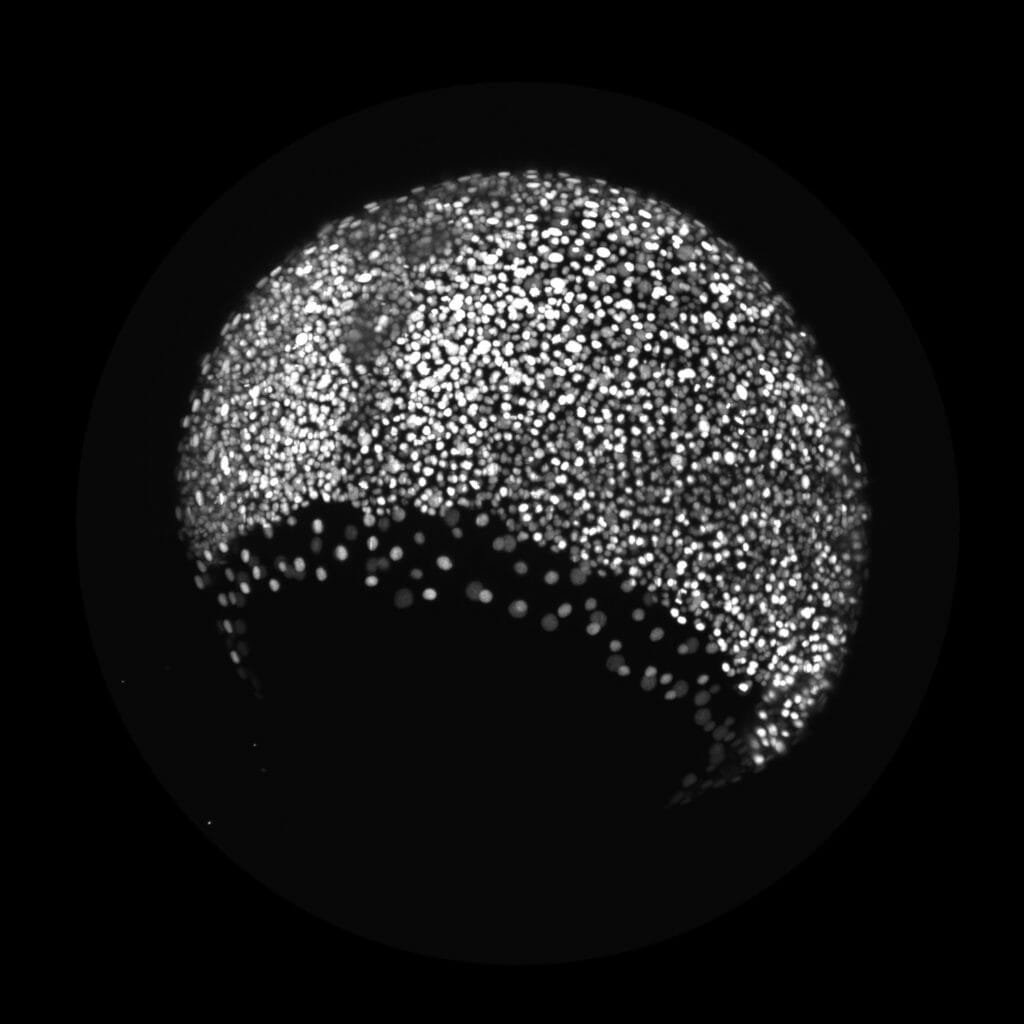

Julianne McCall, PhD
Placement: Senate Office of Research
PhD, Neuroscience, Heidelberg University
MS, Biomedical Sciences, UC San Diego
BS, Neuroscience, Denison University
For Julianne McCall, science is deeply personal.
“When you are nine years old, and your little sister is diagnosed with neurological complications in utero, your own life becomes a natural diving board into the field of neuroscience,” says Julianne. “Through all the complications, pediatricians and surgeons were perpetually amazed by how my sister’s development nonetheless pressed on. They predicted she would not survive even to birth. That type of experience opens one up to a whole new world of trying to understand biological systems.”
During high school in Ohio, Julianne volunteered as a youth soccer coach. By chance, one parent along the sidelines was the Cleveland Clinic’s chief neurosurgeon. That introduction launched a meaningful mentorship and a summer research stint ― the first of twelve labs Julianne would work in across three nations over 16 years.
Julianne moved back home to California for graduate school at UC San Diego. When her advisor was recruited to establish a new research lab in Germany, Julianne followed along and completed her doctoral research there.
“I studied and developed gene therapy strategies for brain and spinal cord injury,” says Julianne. Her doctoral research focused on triggering neuroregenerative processes after injury — seeking to replicate in the brain and spinal cord the kind of repair responses that naturally get activated in our peripheral nervous system.
“For example, following a paper cut on your finger, you are not paralyzed for life ― despite the fact that you just severed thousands of nerve fibers,” explains Julianne, who also counts a Fulbright research fellowship in Sweden among her academic journeys. “But if you study these neurons after this seemingly minor injury, you realize that up to a thousand genes are being switched on or off to achieve regeneration and regain function. Your body is actually restructuring the local nervous system as it heals from the tiny paper cut.”
Compare that minor miracle to the devastation of spinal cord injury.
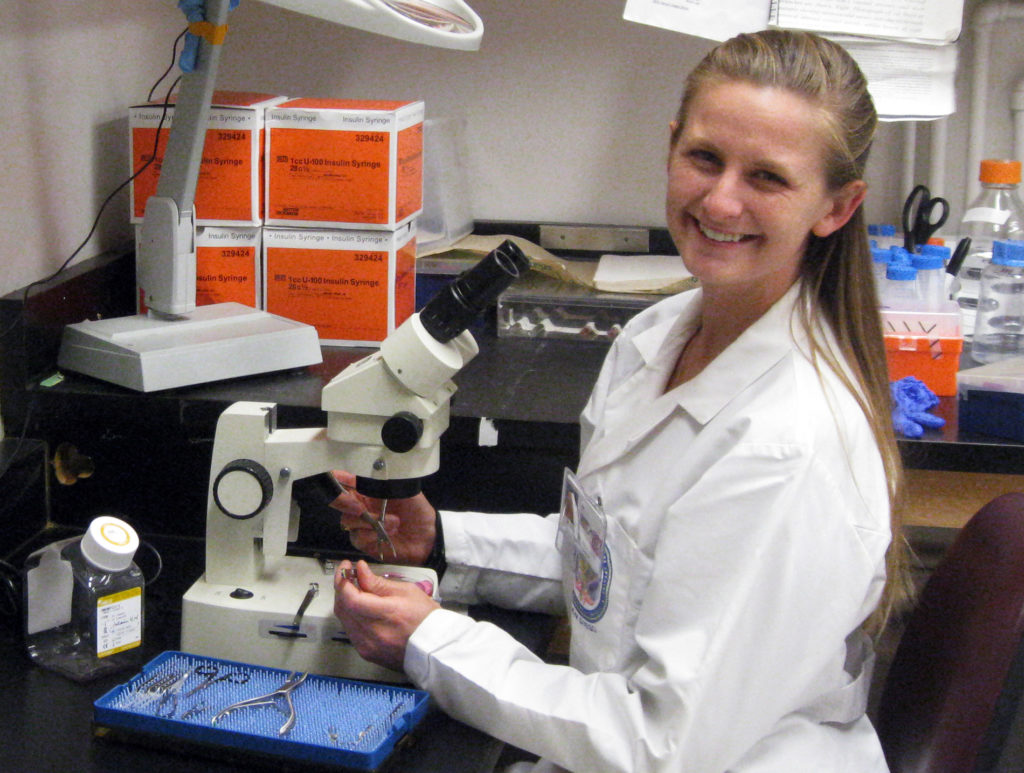
“If one experiences that same level of injury on the spinal cord or brain, the damaged nerve fibers never grow back, leading to permanent paralysis,” says Julianne. “What we were trying to do was identify the genes responsible for peripheral nerve regeneration ― which heal those injuries that happen every day like bruises and cuts ― and facilitate that process in the brain and spinal cord, using the body’s innate signals and modern gene therapy techniques.”
Generating connections has become something of a passion for Julianne, whose professional networks and community-building pursuits are as numerous and intricate as the nerve bundles she studied. She co-founded the TEDxFulbright conference series, which has now spread across five continents; served as director of the International “Brain Bee” Neuroscience Olympiad for secondary students (she won 3rd Place at the international competition in 2002); and has been a delegate to three World Science Forums, most recently in Jordan this year at the invitation of HRH Sumaya bint El Hassan, Princess of Jordan and President of the Royal Scientific Society. She is also the recipient of two U.S. Presidential Gold Medal Awards for Volunteer Service.
Perhaps it was witnessing the power of initiative and service as a teenager that nudged Julianne along her own path. “I saw how different teams provided my family with services, for our medical needs and for our community,” Julianne reflects. “And my mom fought so hard to implement a proper therapy program in the school for my sister. It’s because of my parents’ tireless dedication that my sister flourished beyond expectations. I credit them wholeheartedly for my ambition to change world ― to find not what we can do for medicine but for people, on a human level.”
“My little sister is 24 years old now,” says Julianne. “Although the doctors warned that she would never be able to talk, walk, or connect with others ― she continues to forge her own path. While her biology limits her to the capacity of a small child, anyone who meets her will sense the boundless joy that accompanies the gift of being alive.”
“It is a true blessing, on so many levels.”

The CCST Science & Technology Policy Fellowship trains scientific thinkers to be policy-savvy, while helping equip California’s lawmakers with science-savvy staff. Follow updates from the CCST Science Fellows on Facebook at facebook.com/ccstfellows and on Twitter @CCSTFellows. Explore the CCST Science & Technology Policy Fellowship here.
Find the California Council on Science and Technology on Facebook at facebook.com/ccstorg, on Twitter @CCSTorg, and on LinkedIn. Learn more about CCST at www.ccst.us.

